Brunch Egg Scramble
My family loves crepes, bagels, donuts, French toast, and of course, pancakes, as has been well established in previous posts: https://blog.cord.edu/karlaknutson/2023/08/11/grandmas-pancakes/ and https://blog.cord.edu/karlaknutson/2023/09/19/pancakes-and-pancakes-and-pancakes-oh-my/. But when I say my family, I really mean the two other people and the dog with whom I live (Rosie is allowed human food very rarely—but she is allowed a pancake and popcorn as treats, chicken and rice when she needs a bland diet for her tummy, and now in her senior years, daily yogurt to keep her tummy full of probiotics). Quick breads and batter breads all make delicious breakfasts, but what I really crave in the morning are eggs. Eggs in any format are acceptable—scrambled, over-easy, sunny side up, in purgatory, in an omelet, mixed with spinach or arugula and veggies, or in some sort of frittata, quiche, or egg bake.
Thus, I was elated to find eleven egg dishes in the “Main Dishes & Casseroles” section of The Joy of Sharing. Late one Sunday morning, I decided to make “Brunch Egg Scramble,” submitted by Pat Buen, because several contributors mentioned Pat’s recipes as go-to dishes and because this dish did not need to rest overnight, like so many egg casseroles.
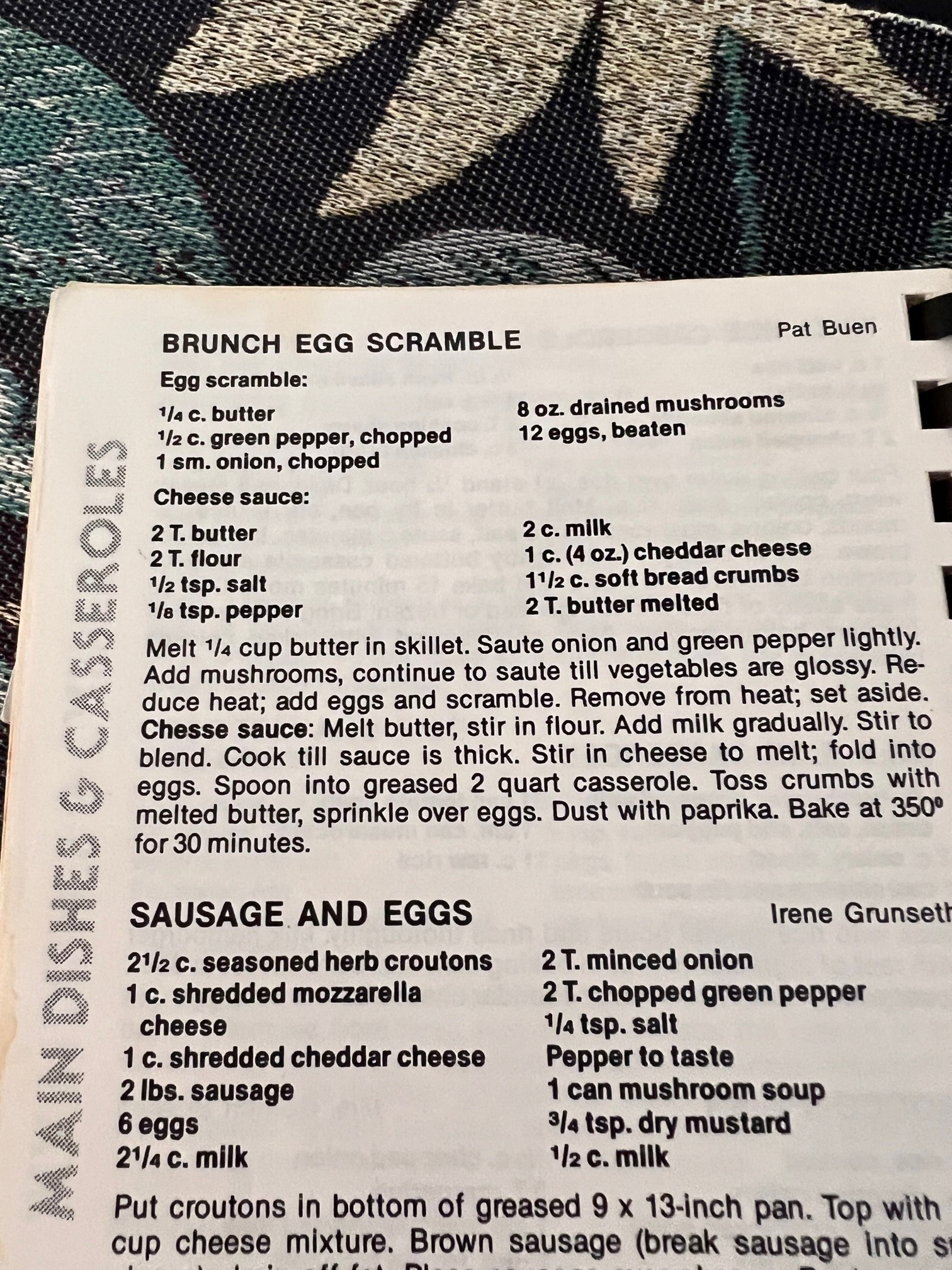
Process
The first steps were to chop and sauté onion and green pepper in butter, which is always a good start to building flavor into a dish. Using three whole foods also pleased me, given my interest in limiting our processed-food intake (see my previous post “Shrimp Salad,” regarding this lofty goal, contextualized and historicized with the research of Michael Pollan: https://blog.cord.edu/karlaknutson/2023/06/21/shrimp-salad/). I didn’t have the specified green peppers but did have orange, red, and yellow; I selected orange, for no particular reason. In hindsight, I wish I had used the red pepper for more visual contrast. The next step prescribed eight ounces of drained mushrooms, a less welcome shift to a canned good. However, I dutifully followed the instructions, since I still enjoy the slipperiness of a canned or jarred mushroom, reminiscent of supreme pizzas eaten in youth.
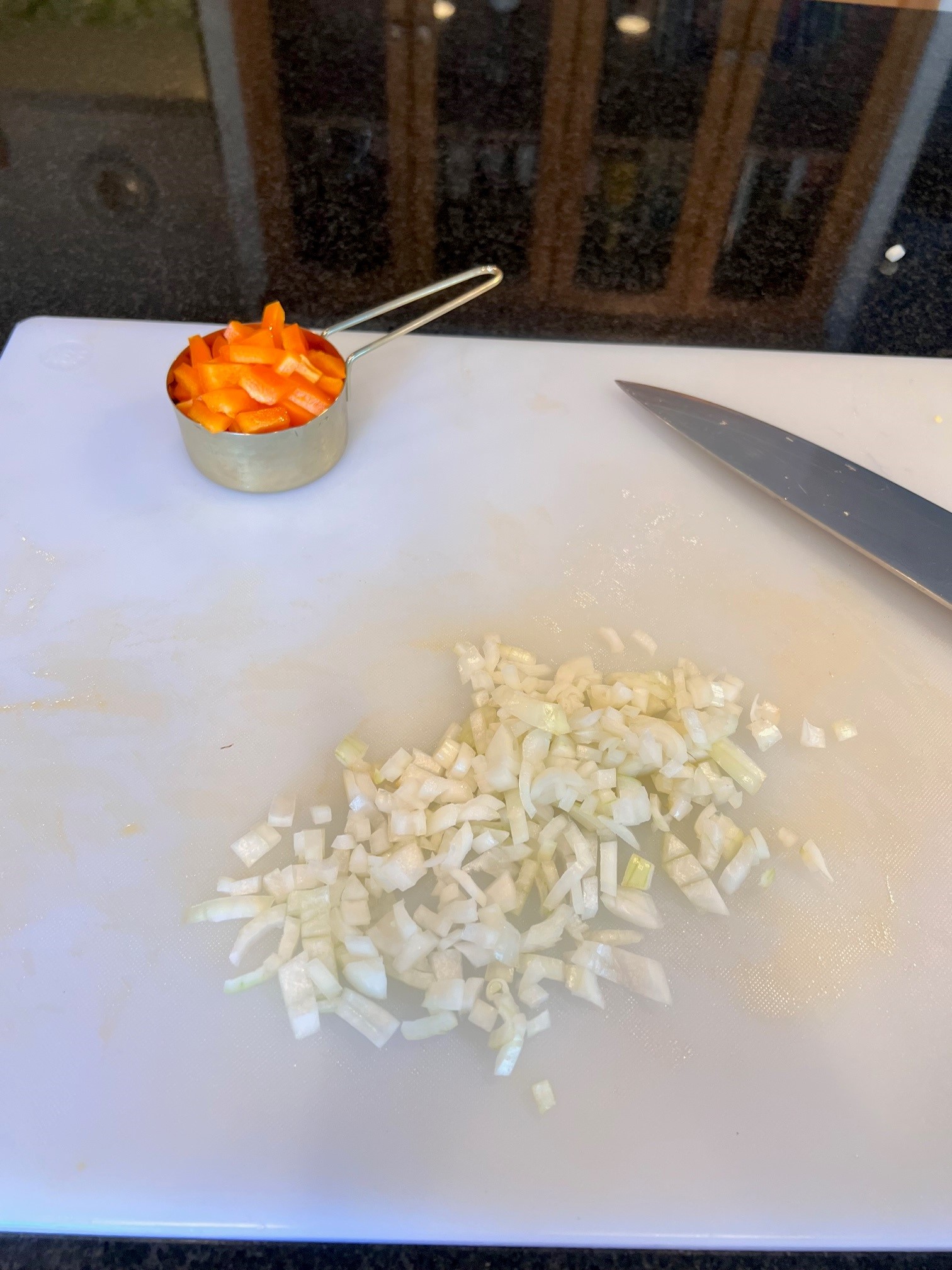
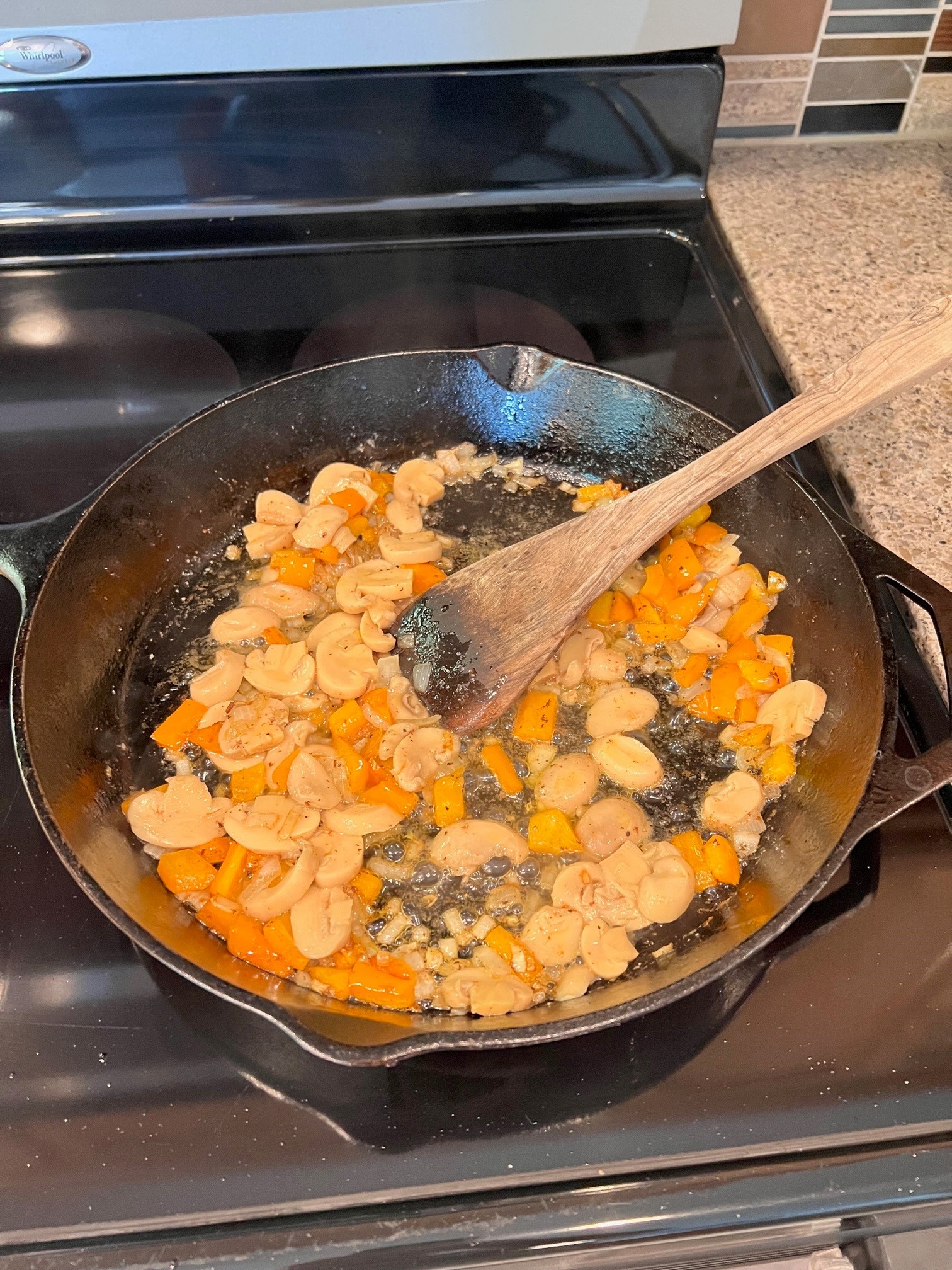
After beating a dozen eggs with my whisk, I added them to the pan to scramble with the veggies. But as I knew that this mixture would later be baked for thirty minutes, I decided to cook them in the pan until they were close to done but not completely. 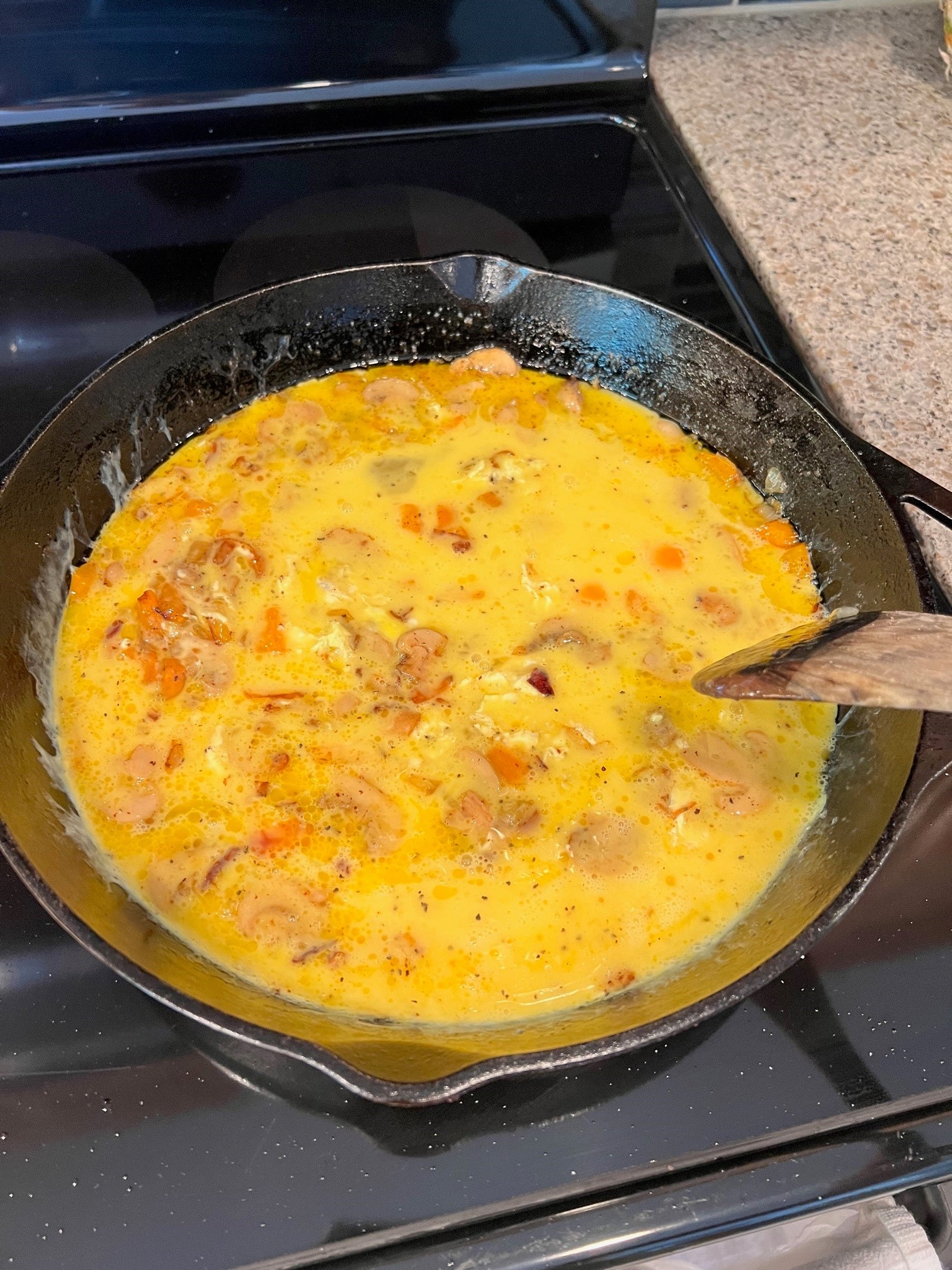

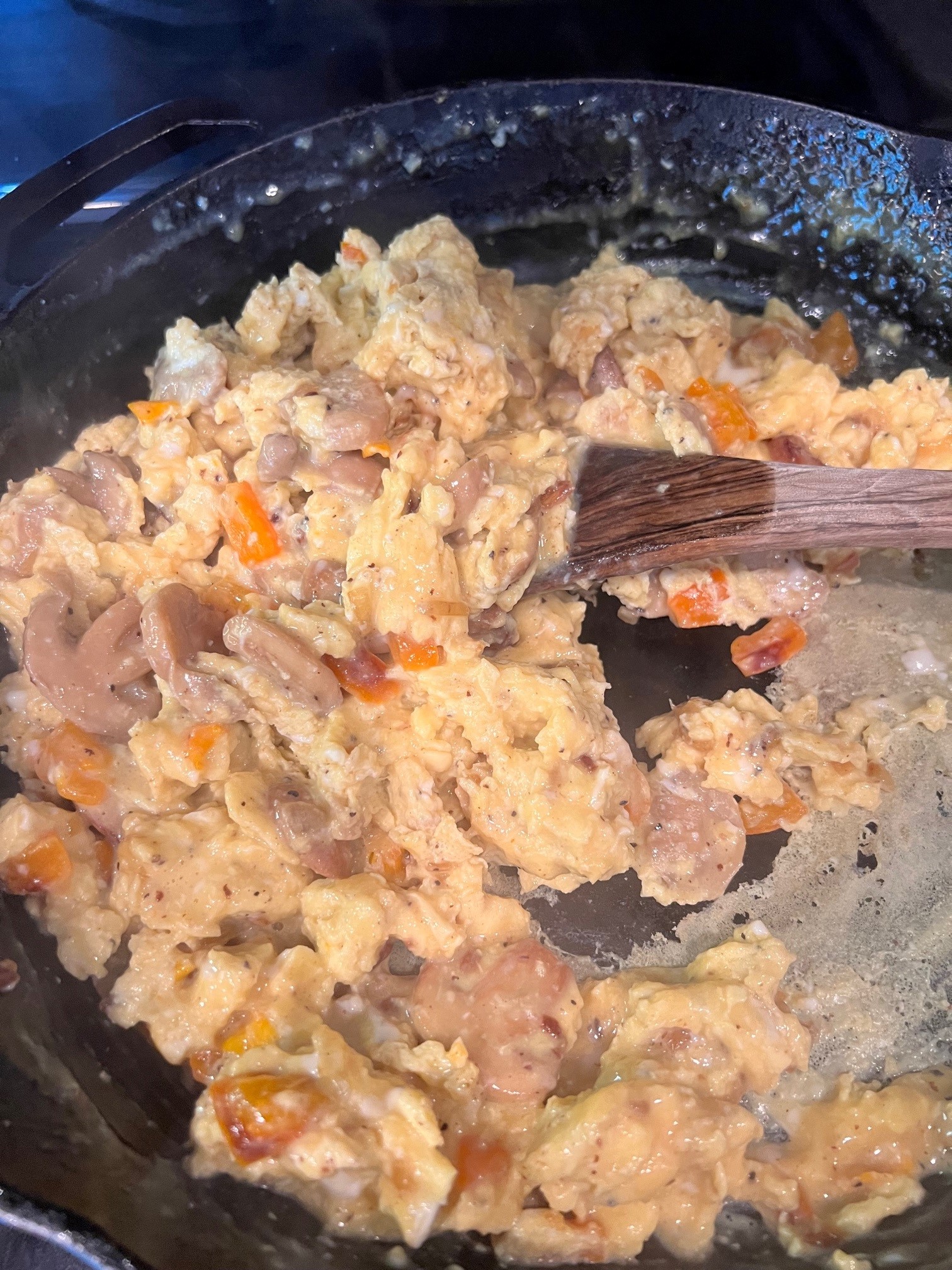
The recipe implies that the “cheese sauce” should be started next, given that the cook has just “set aside” the scrambled egg mixture; however, while sauteing the vegetables, I began the roux, letting it brown slightly.
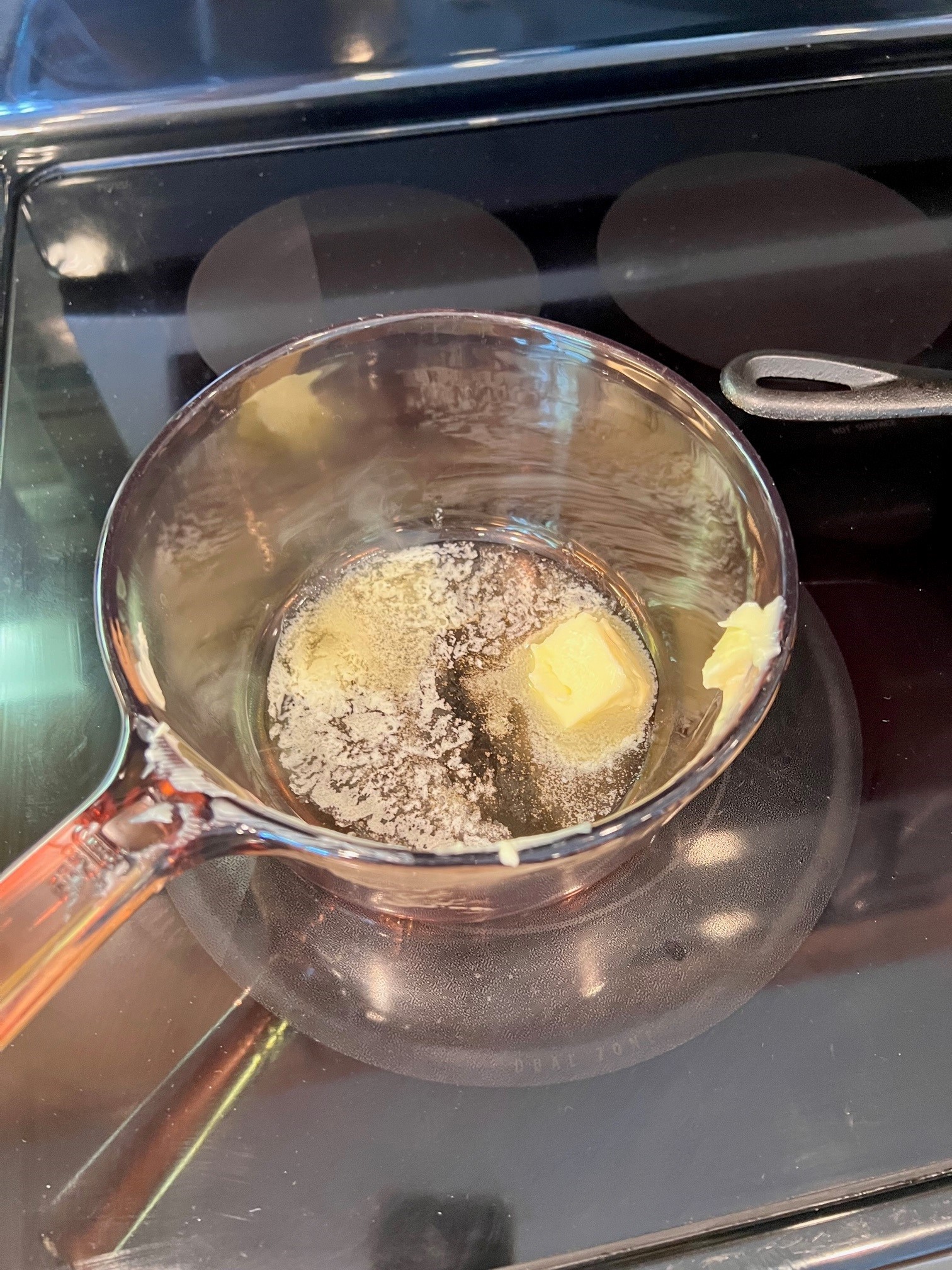

I used whole milk for the milk specified in the sauce, because “the higher the fat content of milk, the more cream or butter can be made from it,” as Harold McGee explains in On Food and Cooking: The Science and Lore of the Kitchen (18). Unlike reduced-fat milks, from which the fat content has been removed, either by skimming cream or “centrifuging off some of the globules” of fat, whole milk is thick and creamy, coating the sides of the glass after drinking it; McGee explains the difference in the consistency and flavor of reduced-fat milks, which are recognized by their “thin body and appearance and are usually filled out with dried milk proteins, which can lend them a slightly stale flavor” (23). Thus, whole milk is always the best milk to use in cooking, as it is closer to cream, which McGee describes with affectionate language:
We value cream above all for its feel. Creaminess is a remarkable consistency, perfectly balanced between solidity and fluidity, between persistence and evanescence. It’s substantial, yet smooth and seamless. It lingers in the mouth, yet offers no resistance to teeth or tongue, nor becomes merely greasy. This luxurious sensation results from the crowding of the fat globules. (27-28)
He’s certainly enthusiastic about cream. Who can blame him, though?
As instructed, I cooked the milk until the sauce was thick and then added the cup of finely grated cheddar cheese, stirring until melted. I used an extra sharp orange cheddar that we had been enjoying, and I hoped the deep color would intensify the orange-yellow color of an egg dish.
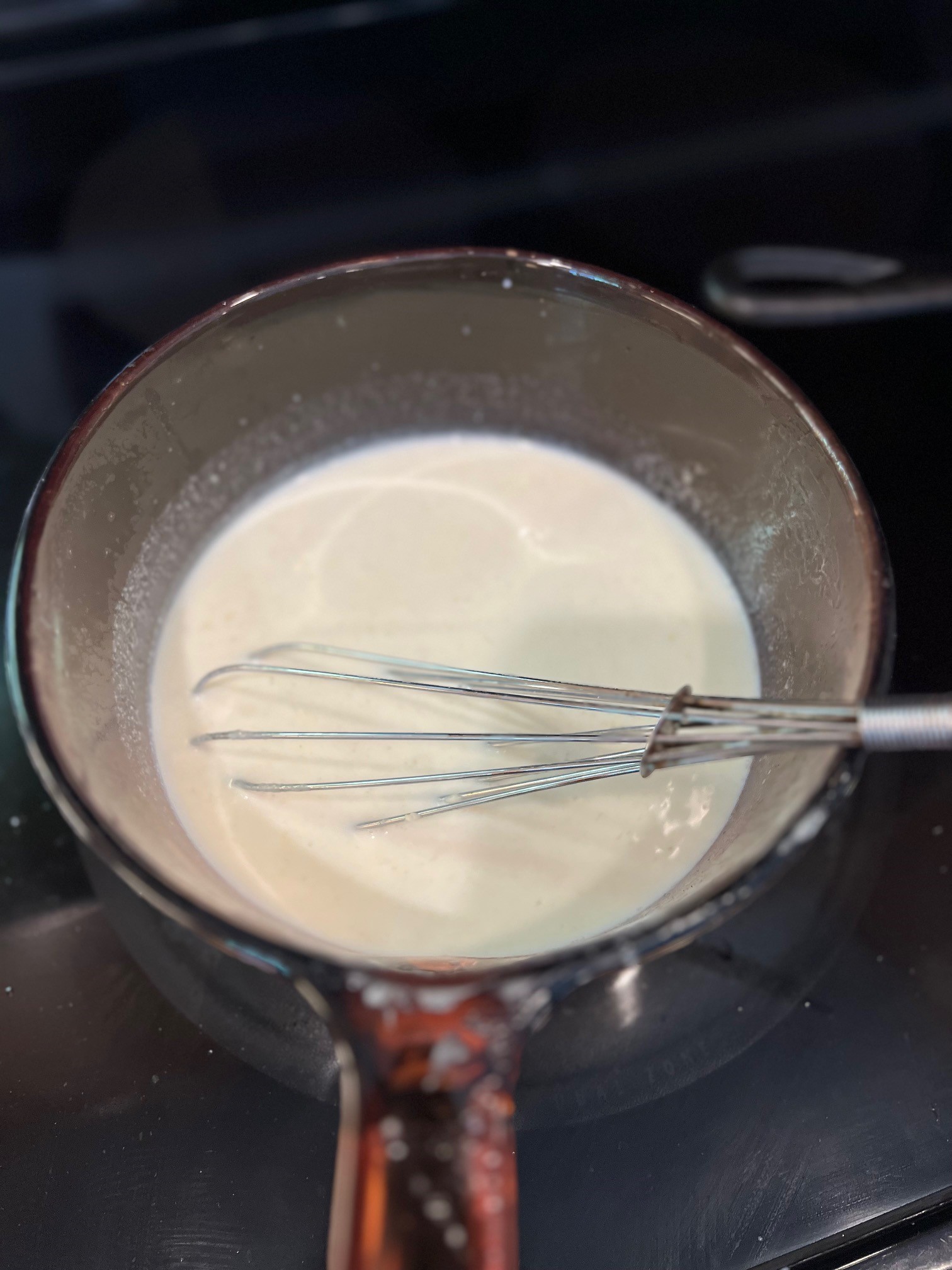
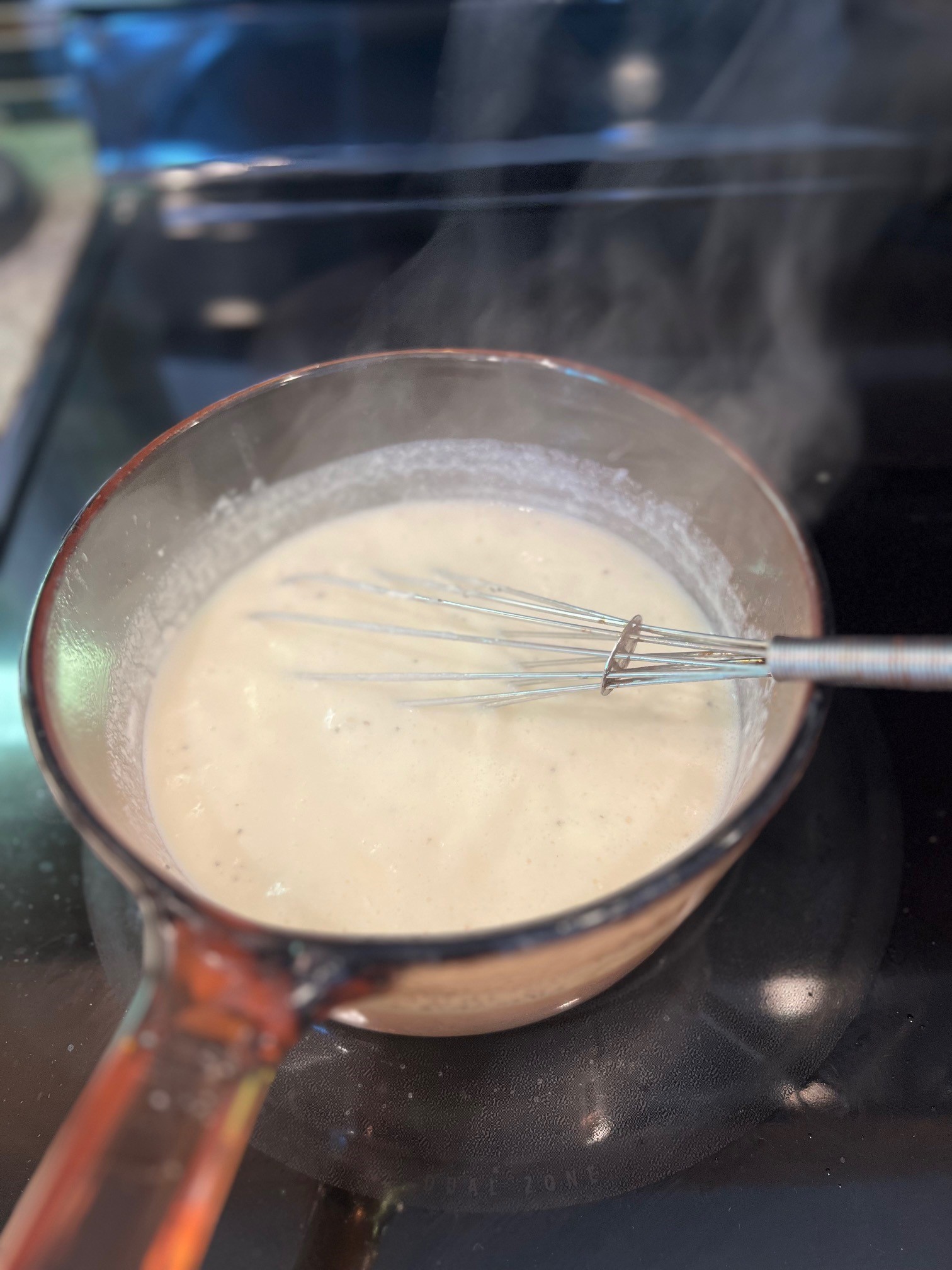

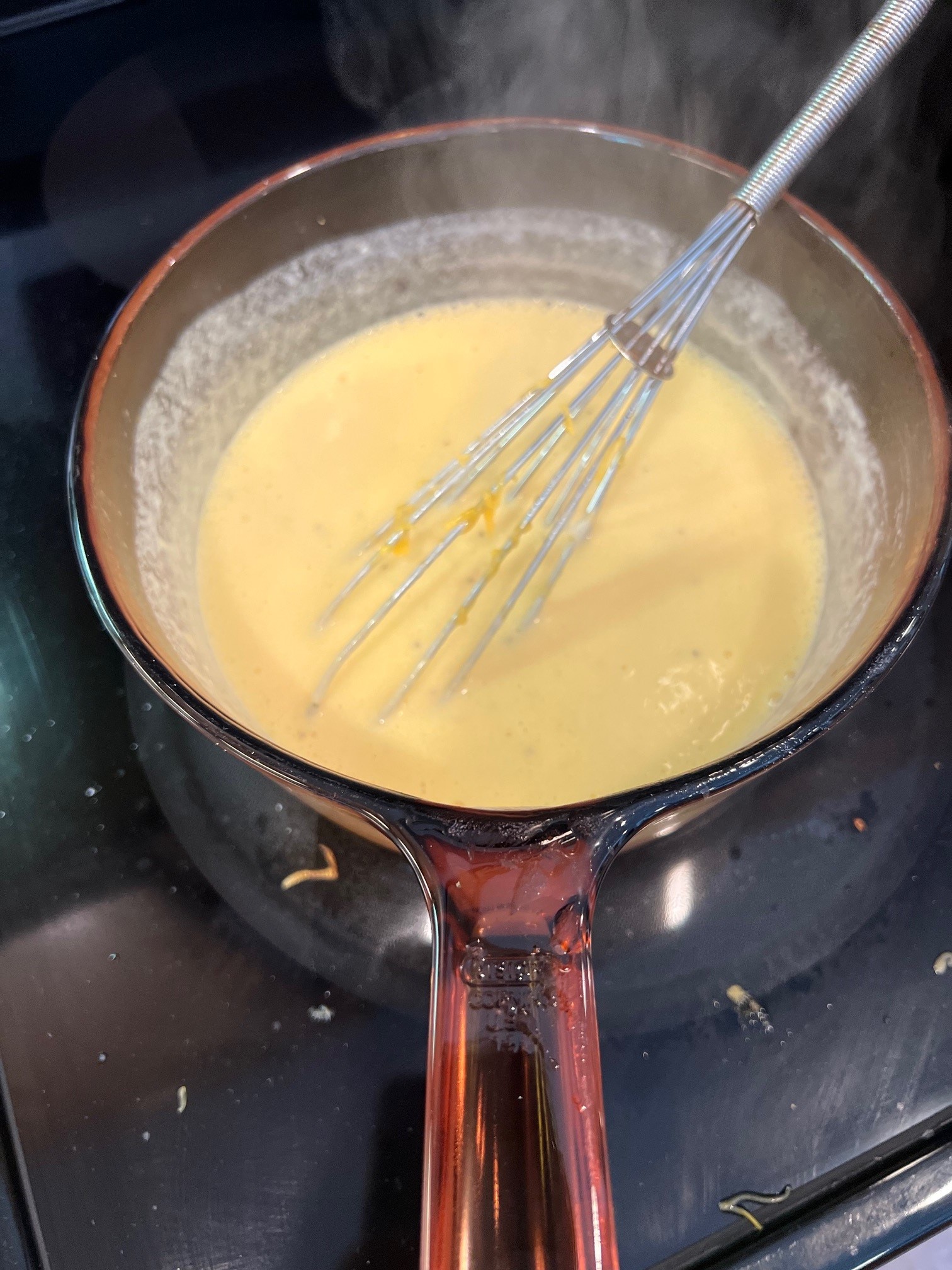
Once the cheese was melted, I folded the sauce into the eggs and transferred the mixture to a casserole dish. It appeared a bit runny, with liquid pooling around the outside of the more solid ingredients.
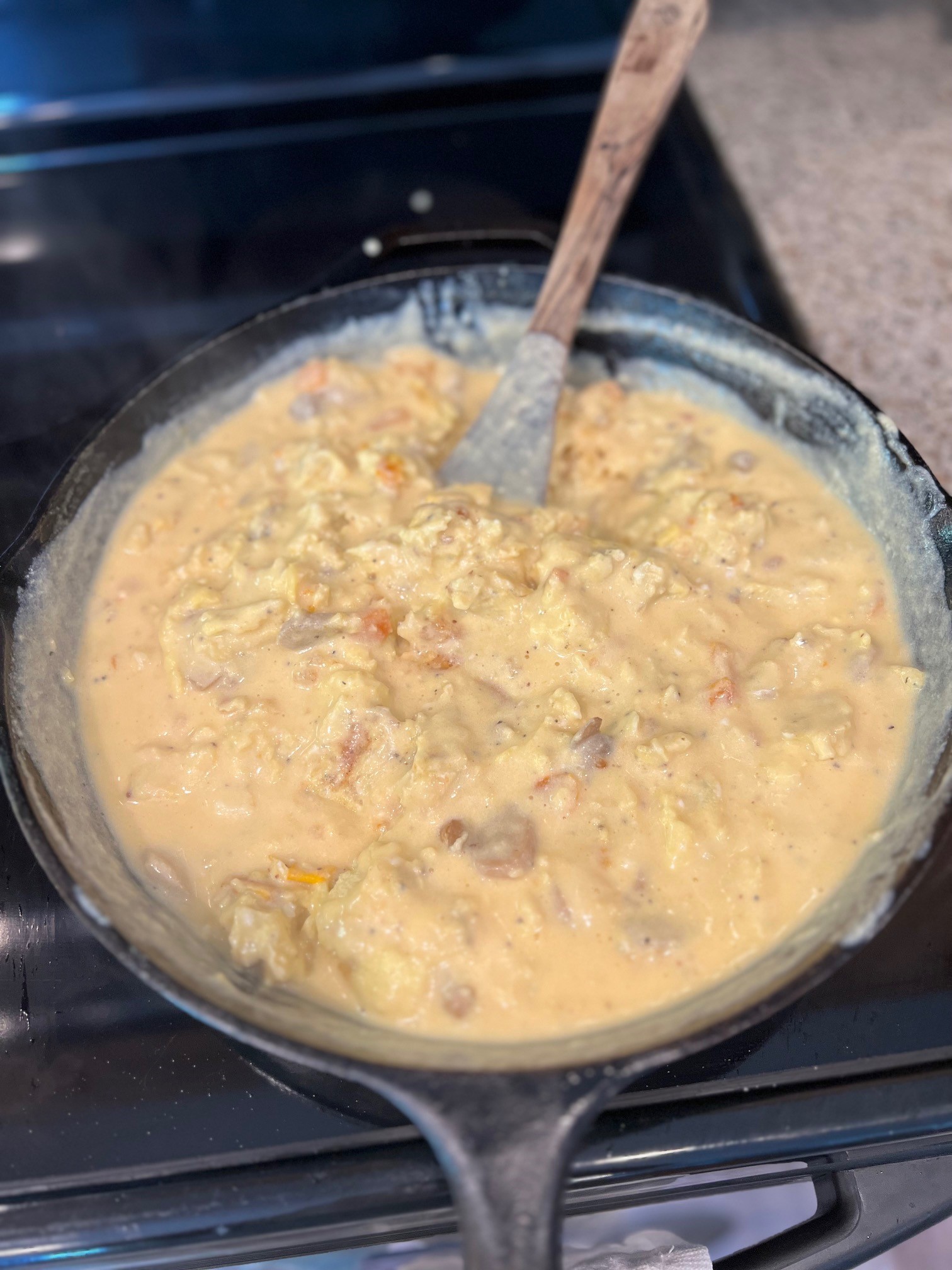
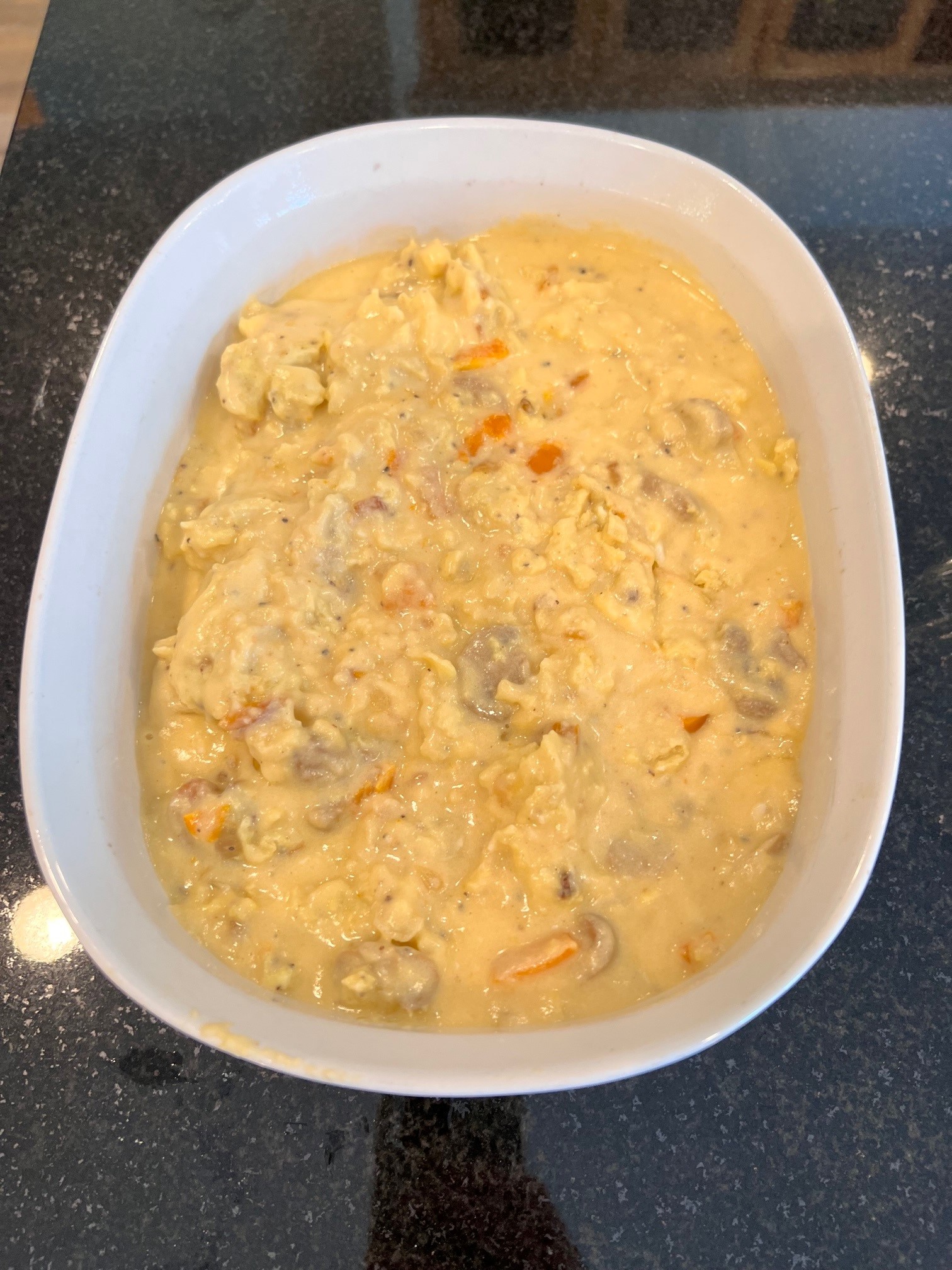
The final step before baking was preparing a breadcrumb topping. Since I had a package of panko breadcrumbs, I substituted dry crumbs for the soft breadcrumbs Pat prescribed, reducing accordingly to a heaping cup rather than the specified one and a half cups. After incorporating the butter, I used most but not all of the topping, as is my family’s preference whenever a breadcrumb topping is part of the dish. The paprika then added some attractive contrastive color.

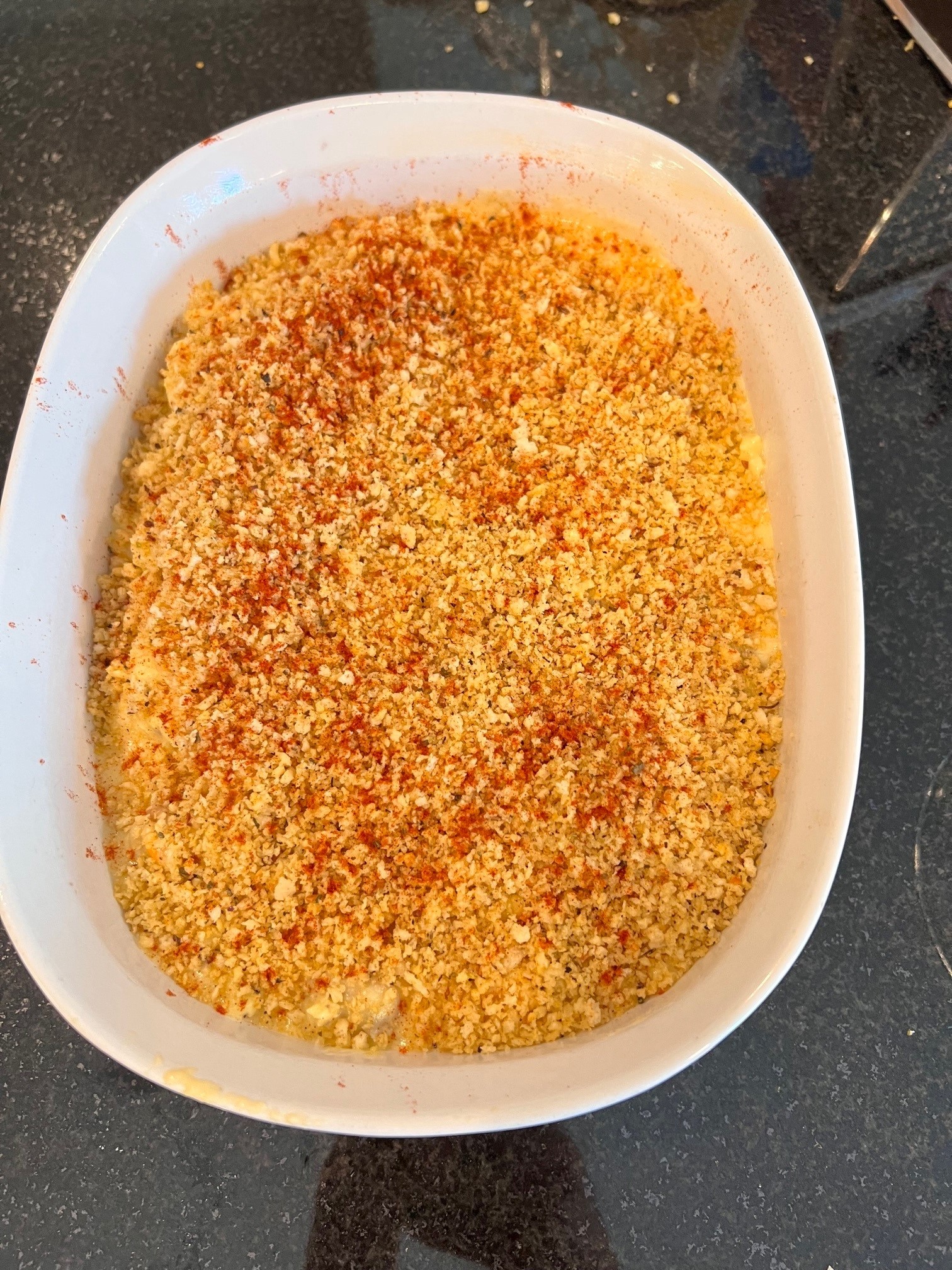
Reflections
After baking for the specified thirty minutes at 350 degrees, I pulled “Brunch Egg Scramble” out of the oven to find the top crust turned a lovely golden brown. I served it as a late lunch, with fruit and a salad of tomatoes and mixed greens. Like most casseroles that are not firm enough to cut into squares, it didn’t come out of the pan particularly well. It was fine, but felt a bit overcooked, with a grainy texture. It’s not a dish I’m eager to make again, especially since there are ten other egg casseroles to test.

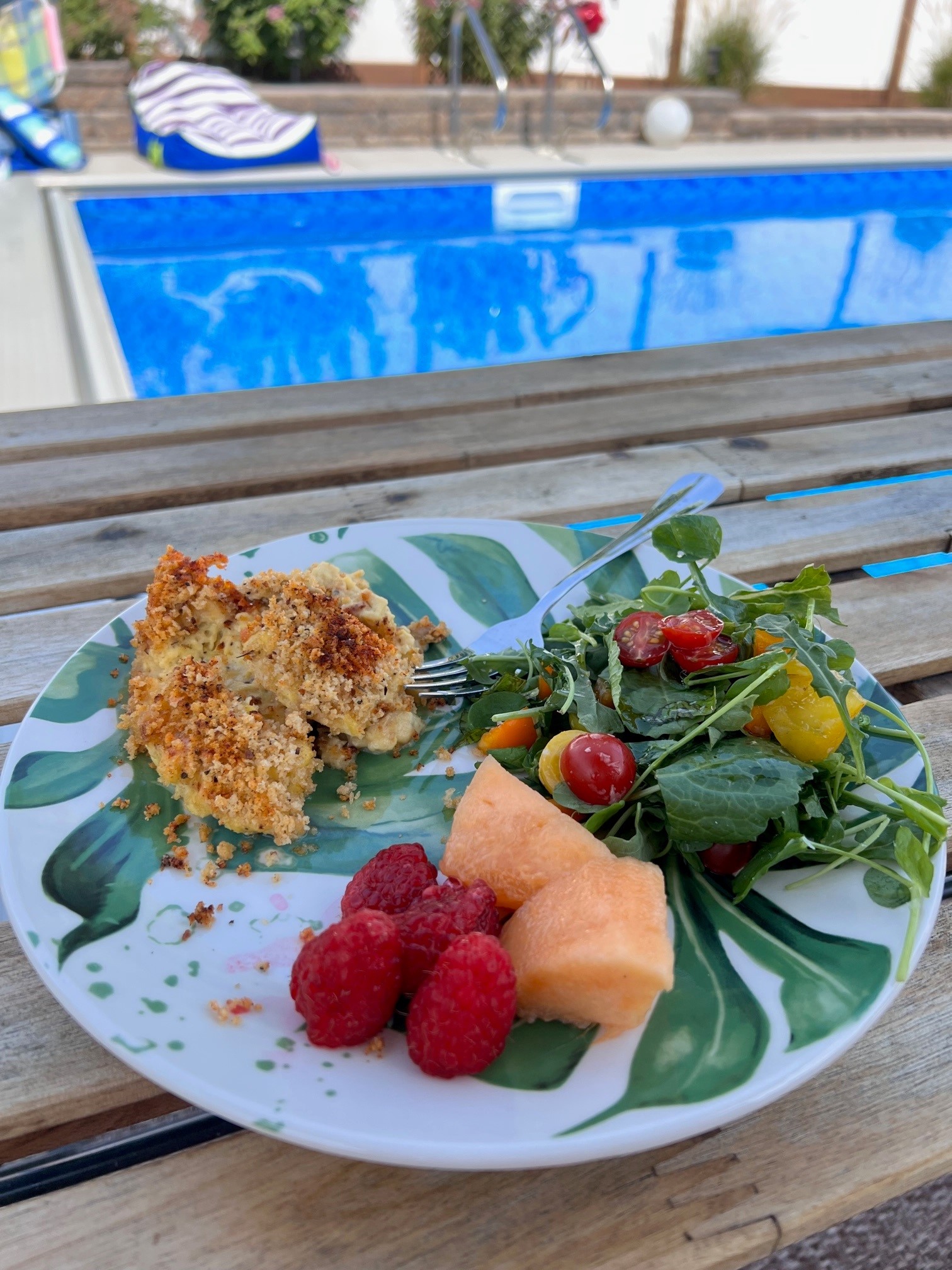
The culprits, I think, are the lengthy cooking time, making the eggs tough, as well as my choice of cheese—in hindsight, it’s become clear that extra sharp cheddar was a mistake, resulting in the sauce’s grainy texture. That’s on me, of course; I should have looked it up ahead of time, rather than scanning my cheese drawer and grabbing the only cheddar we had. I have since learned about the varieties of cheddars; what I needed was a younger, mild cheddar. As Kelli Foster explains in “A Guide to Buying Cheddar at the Grocery Store,” “the more aged the cheese is, the less moisture it contains and the more heat is required to melt it. So when it comes to cooking, mild, medium, and sharp cheddars are best for melting, while extra-sharp and aged cheddars don’t melt as well” (https://www.thekitchn.com/grocery-store-cheese-is-complicated-heres-what-to-know-256663). Foster pronounces extra-sharp cheddar as “likely to crumble or break when sliced” and “best for eating out of hand,” explaining why we liked it so much when sliced as an accompaniment to fruit, pie, and banana bread. So now I know!
The recipe’s paragraph of directions was clear and straightforward, but the ingredient list could be confusing. The two parts of the recipe—the egg scramble and the cheese sauce—are listed separately, but sauce list includes the bread-crumb topping ingredients, as well as salt and pepper, which are not mentioned in the paragraph of instructions. I’m still not sure where the salt and pepper are supposed to be incorporated, but I made the not-revolutionary decision to add them while sautéing vegetables.
Contributor
I provided a biography for Pat Buen in a previous post, “Krystal’s Dishes,” but I’ve included it again here for readers’ convenience. Here’s the link to that post: https://blog.cord.edu/karlaknutson/2023/07/17/krystals-dishes/
Pat (Patricia) Buen was born in Louisiana, in 1943, to Captain Herbert and Laura Wilson, but it seems they ventured north, as she grew up and went to high school in Berthold, ND (northwest of Minot). In 1961, she married Gene Buen, also from Berthold, and they briefly lived in Minot, where Pat worked at First National Bank, before moving to Velva in 1964. Mr. Buen (funny how the honorific still can be present for us even decades after being in their classroom 😊) taught math and coached baseball in Velva for more than thirty-five years. Pat and Gene had three children, Dianna, Daniel, and David, and after staying home with them during their childhoods, Pat returned to working in banking in Velva for twenty-five years, retiring in 2013. Both Buens were active at Oak Valley: Gene served on the council, and Pat served as church secretary for thirteen years, as well as in circles and the Sunday school program. I understand that Pat traveled to most of Gene’s baseball games during his long tenure as a coach, traveling with the team all over ND and in particular, to their 16 appearances at the state baseball tournament; Velva won three championships—in 1984, 1986, and 2010. Gene passed away in 2015; Pat in 2018. I know Pat for a variety of reasons: church activities, my mother’s homemaker’s group, and her family: she is my friend David’s mother and Mr. Buen’s wife (and he was my math teacher for most of high school).
Pat’s other contributions to the cookbook are “Grouse or Pheasant at its Best,” “Sticky Muffins,” “Snicker Cake,” “Freezer Strawberry-Rhubarb Preserves,” “Sharon’s French Bread,” “Upside-Down Pizza,” “No-Cook Peach Cream Pie,” “Strawberry Pie,” “Peach Pie,” and “Hot Sandwiches.” So many of these have amazing names, which reminds me of Pat. She was fun to be around and an excellent cook. During my interviews in Velva, I heard many people speak of how often they made Pat’s recipes from this cookbook; her French bread was singled out as a favorite. You’ll have the chance to read about it very soon, in one of the upcoming posts for my three-part series: Movie Night Recipes.
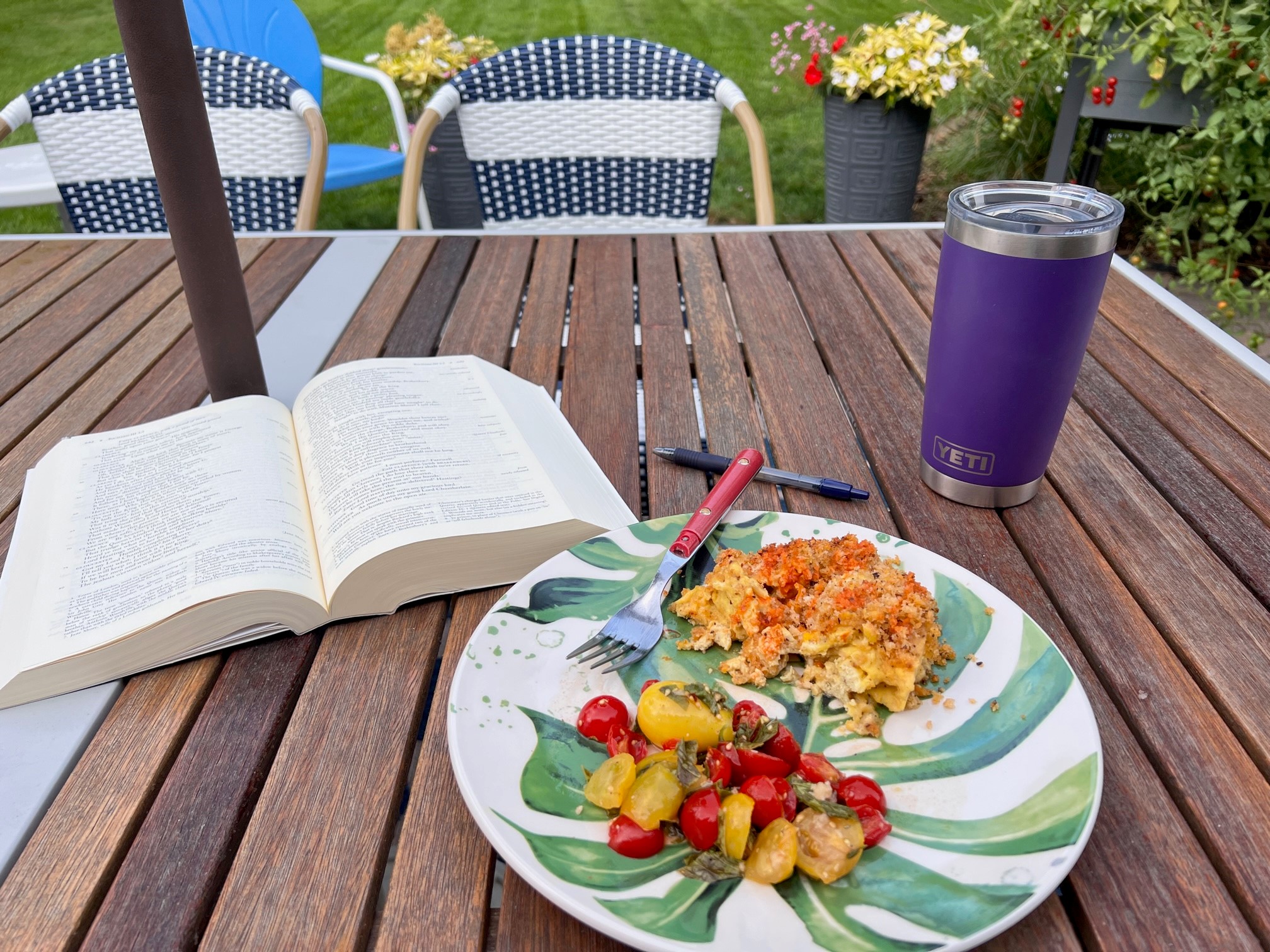
This post is part of an ongoing series in which I make and reflect on recipes and the people who contributed them to the 1985 Oak Valley Lutheran Church compiled cookbook, The Joy of Sharing.

